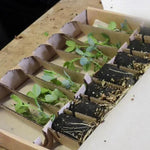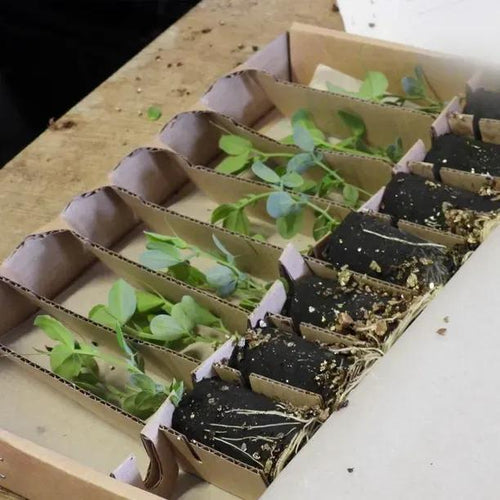'White Frills' Sweet Pea Plants
Sweet pea White Frills (Lathyrus odoratus) is one of the best pure white varieties you'll find, which makes it a must for the exhibitor, ordinary gardener and the flower arranger. Most varieties have touches of other colours in their blooms, but not White Frills. Check out our full range of sweet peas. White Frills is the go-to choice for anyone creating a white garden like the one at Sissinghurst.
White Frills may be plain white but plain it certainly isn't. Typical of its Spencer heritage, the flowers frilly at the edges, with the standard petal (uprights) having an almost pleated appearance while the wings (lower petals) are ruffled and rolled, appearing in small clusters throughout the summer. Bred in 2002, unlike a lot of other varieties, it's a strong grower.
If you cut flowers for the house, White Frills is the perfect sweet pea for everything from bridal bouquet to egg-cup arrangement with its pure white petals, strong perfume and apple green foliage. At the same time it's easy to grow - maybe a reason why it's so popular and successful. Keep picking for summer vases full of flowers. Give plants a high-potash feed every fortnight, and you'll get even more blooms. Don't let seed pods form, as that will make the plant's flowering mechanism stitch off.
Garden Design Ideas
As a pure white flower with no distracting edging or bicolours, this is one of the most versatile sweet peas there is, whether you choose to use it in a traditional cottage garden-type setting, or something ultra-modern and architectural. The flowers will stand out in your borders, especially if they're backed by a dark evergreen hedge, where they'll positively glow in the evening light. White will lighten up a dull spot, so if you grow your sweet peas in large containers with integral supports, when a gap appears, you have an instant solution. Even if it's in partial shade at ground level, if the plant's top growth is in full sun, it'll succeed and keep on flowering. White Frills will also act as a great counterpoint to the darker varieties, especially Almost Black (dark maroon). As it's such a strong grower, it's an ideal variety for planting en masse to climb up a trellis on a sunny wall, or cover an eyesore like a garage.
Features
- Colour: Pure white
- Stem: Long
- Height: 2m
- Type: Spencer
- Scent: Highly scented
- Flowering: June-September
- Planting Months: March-June
- A favourite with exhibitors
- Popular with flower arrangers
- Strong growth
History & Trivia
In the language of flowers, sweet peas are said to symbolise bliss or delicate pleasure.

 Secure, One-Tap Checkout
Secure, One-Tap Checkout
 Hand Picked, Delivered to Your Door!
Hand Picked, Delivered to Your Door! 1 Year Bareroot Guarantee
1 Year Bareroot Guarantee




